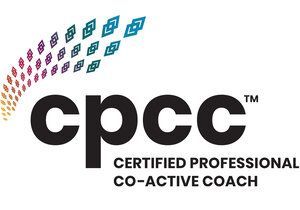Is Your Relationship Due for a Mindset Reset?

Your partner forgets to text you back after a long day, and you think, "They don’t care about me." Or they casually mention plans with friends that don’t include you, and you wonder, "Am I not important to them anymore?" These passing negative thoughts may seem trivial, but they reflect deeper narratives we unconsciously construct about our partners and relationships.
In relationships, the way we think about our partners and their actions matters deeply. As relationships evolve, we develop beliefs about our partners and the relationship. These beliefs shape how we feel, act and respond to them.
As a couple therapist, I have witnessed how it is often not the events themselves that drive disconnection, but the interpretations and narratives we attach to them.
Relationships get strained by negative thought patterns because these hidden beliefs about our partners and their actions silently erode connection and fuel resentment. However, a simple shift in mindset can improve the quality of your relationship.
The Cycle of Negative Perception
We often assume that our perceptions of reality are objective. However, our minds act as powerful filters, shaping how we interpret our partner's words and actions. For instance, if you believe, “They don’t care about me,” a forgotten text message might feel like proof of neglect. On the other hand, if you think, “They’re doing the best they can,” the same situation might seem like a genuine oversight which is understandable.
These thoughts set the emotional tone for your relationship, influencing how you feel during moments of connection or tension. Small disappointments or unmet needs that go unaddressed can gradually shift your perspective, leading you to interpret interactions through a lens of frustration or resentment. This process can be driven by cognitive biases which are mental shortcuts that help us process information quickly, but they can also distort reality in ways that harm relationships.
Here are some common thought patterns that I often see in couples:
- Confirmation bias
Selectively focus on evidence that confirms our existing beliefs, ignoring anything that contradicts them. If you believe your partner is inconsiderate, you'll likely notice every instance of forgetfulness while overlooking their thoughtful gestures.
- Black-and-white thinking
Seeing things as either all good or all bad, such as “They never listen to me” or “They’re always selfish.” This mindset prevents you from seeing the complexities in your partner’s behavior and stops you from appreciating the shades of gray in their actions.
- Personalization
Interpreting your partner’s actions as a direct reflection of their feelings toward you. For example, when they’re late, you might think, “They don’t respect my time,” instead of considering that they could be dealing with an unexpected situation.
- Mind reading
Assuming you know your partner’s thoughts or intentions without asking or clarifying. If they don’t initiate physical affection, you may think, “They’re not attracted to me anymore,” when they may simply be tired or dealing with stress.
- Catastrophizing
Jumping to the worst possible conclusion, such as thinking, “This argument means we’re heading for a breakup,” instead of seeing it as a normal part of any relationship.
- Negative filtering
Focusing only on your partner’s flaws while disregarding their positive qualities. For example, after a few instances of your partner being late, you may start seeing them as unreliable, ignoring all the times they’ve been on time.
Ways to Reset Your Mindset
Changing entrenched thought patterns isn't about ignoring or avoiding important issues. It's about cultivating a more mindful and intentional approach to your relationship. Negative thoughts can quickly escalate emotions, leading to impulsive reactions that hurt the relationship. A mindset reset helps you assess the situation more objectively respond more thoughtfully.
Here are some strategies to break free from the negative thought patterns.
- Cultivate gratitude
Instead of focusing on what's wrong, consciously seek out moments of kindness, no matter how small. Appreciate the thoughtful gestures your partner makes. Recognizing these efforts reinforces the positive in your relationship, helping you see your partner in a more favorable light.
- Challenge your assumptions
The next time a negative thought arises, pause and challenge it. Ask yourself, "Is there another way to interpret this?" Instead of defaulting to "They’re not prioritizing me," try reframing it as "They’re just overwhelmed with deadlines right now." This shift in perspective can defuse unnecessary tension and foster a deeper understanding between you and your partner.
- Seek clarification, not conclusions
Instead of jumping to conclusions based on a fleeting moment, engage in conversation. For example, say, “I noticed you seemed quiet earlier. Would you like to talk about it? Asking questions shows genuine interest in your partner’s feelings and prevents misunderstandings.
- Embrace a growth mindset
See challenges as opportunities for growth, not signs of incompatibility. When conflicts arise, view them as chances to improve your communication and problem-solving skills together. A growth mindset allows you to navigate difficulties as a team, strengthening your bond and building mutual support.
- Assume positive intent
Start from a place of trust. Believe your partner cares about you and is doing their best. Even when things don’t go perfectly, choosing to assume positive intent softens the impact of misunderstandings. This mindset fosters patience, understanding, and deeper trust between you and your partner.
When to seek help
Sometimes, deeply ingrained thought patterns are challenging to shift on your own. Therapy provides a safe space to explore the root causes of these patterns, understand how they affect your relationship, and learn tools to address them.
By recognizing and challenging unhelpful thought patterns, we can create space for mutual empathy, understanding, and respect. These changes don’t happen overnight, but with patience and intentionality, even small mindset shifts can lead to profound transformations.










